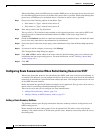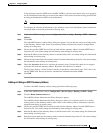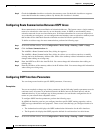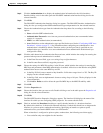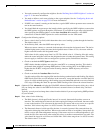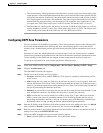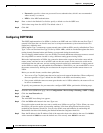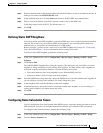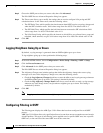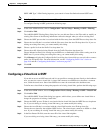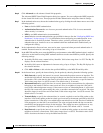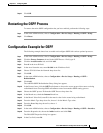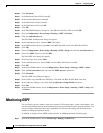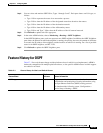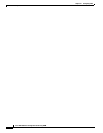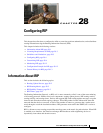
27-14
Cisco ASA 5500 Series Configuration Guide using ASDM
Chapter 27 Configuring OSPF
Customizing OSPF
Step 3 Choose the OSPF process that you want to edit, then click Advanced.
The Edit OSPF Process Advanced Properties dialog box appears.
Step 4 The Timers area allows you to modify the settings that are used to configure LSA pacing and SPF
calculation timers. In the Timers area, enter the following values:
• The SPF Delay Time, which specifies the time between when OSPF receives a topology change and
when the SPF calculation starts. Valid values range from 0 to 65535. The default value is 5.
• The SPF Hold Time, which specifies the hold time between consecutive SPF calculations.Valid
values range from 1 to 65534. The default value is 10.
• The LSA Group Pacing, which specifies the interval at which LSAs are collected into a group and
refreshed, check summed, or aged. Valid values range from 10 to 1800. The default value is 240.
Step 5 Click OK.
Logging Neighbors Going Up or Down
By default, a syslog message is generated when an OSPF neighbor goes up or down.
To log neighbors going up or down, perform the following steps:
Step 1 In the main ASDM window, choose Configuration > Device Setup > Routing > OSPF > Setup.
Step 2 Click the Process Instances tab.
Step 3 Click Advanced for the OSPF process that you want to edit.
The Edit OSPF Process Advanced Properties dialog box appears.
Step 4 The Adjacency Changes area includes settings that define the adjacency changes that cause syslog
messages to be sent. In the Adjacency Changes area, enter the following values:
• Check the Log Adjacency Changes check box to cause the ASA to send a syslog message whenever
an OSPF neighbor goes up or down. This setting is checked by default.
• Check the Log Adjacency Changes Detail check box to cause the ASA to send a syslog message
whenever any state change occurs, not just when a neighbor goes up or down. This setting is
unchecked by default.
Step 5 Click OK.
Note Logging must be enabled for the neighbor up or down messages to be sent.
Configuring Filtering in OSPF
The Filtering pane displays the ABR Type 3 LSA filters that have been configured for each OSPF
process.
ABR Type 3 LSA filters allow only specified prefixes to be sent from one area to another area and restrict
all other prefixes. This type of area filtering can be applied out of a specific OSPF area, into a specific
OSPF area, or into and out of the same OSPF areas at the same time.



